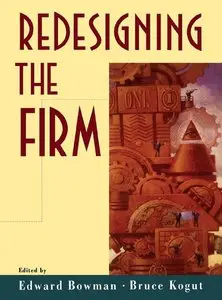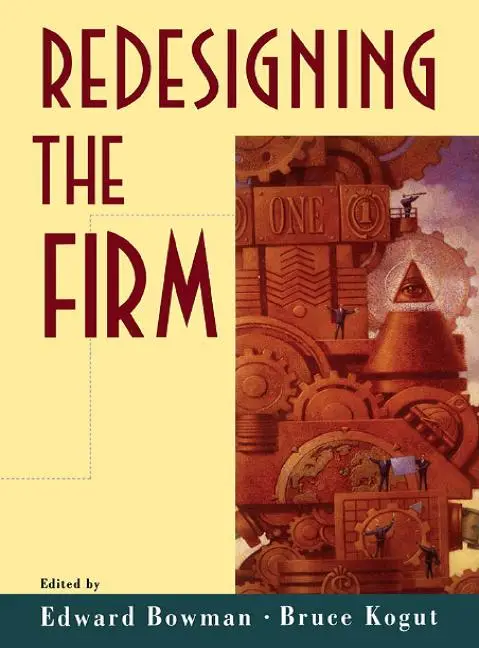Edward H. Bowman, Bruce M. Kogut, "Redesigning the Firm"
Oxford University Press, USA | 1995 | ISBN: 0195087100 | 296 pages | PDF | 12,4 MB
Oxford University Press, USA | 1995 | ISBN: 0195087100 | 296 pages | PDF | 12,4 MB
The rapidly changing nature of the modern industrial world has helped spark a radical rethinking of the design of corporations, changes no less revolutionary than the wave of innovations associated with the names of Frederick Taylor and Henry Ford in the dawn of this century. In Redesigning the Firm, nineteen experts from one of the nation's premier business schools, the Wharton School at the University of Pennsylvania, take an informed look based on their own research at various aspects of this revolution, offering managers a host of insights and powerful tools for orchestrating change in their firm.
Redesigning the Firm illuminates many of the challenges that confront the executive, approaching the issue from a wide variety of perspectives. The book considers, for instance, whether the firm's stockholders, directors, and managers should reevaluate how they distribute power and share information, and it explores why external board members often fail to exercise a strong voice in governance. It looks at the changing boundary of the firm, as partnerships and alliances have become more important, examining this new development in three types of market: emerging markets such as Eastern Europe, markets where economies of scale provide a critical advantage, and dynamic markets where speed is essential. It examines the use of suppliers in Japanese and British firms, and finds the former to be more efficient (due to a combination of competition and cooperation). Some of the essays are quite eye-opening. For instance, one chapter demonstrates that firms can increase product variety at no extra cost, revealing how a study of the automotive industry shows that investing in training, in flexible manufacturing processes, and in better operations management will increase variety without compromising productivity or lowering quality. And one chapter sounds a strong note of dissent, contending that the design of organizations matters little to a global competitor–what matters is how managers think about the world, and how the operating procedures they use guide decision-making and behavior. In the final section, editors Bowman and Kogut reflect on two outstanding issues concerning the design of the firm: how much of what managers used to believe was critical to their success can they place outside their ownership boundaries; and how to deal with the complex challenges that modular design presents. The editors apply their conclusions to the Wharton School itself, making the book particularly valuable for anyone concerned with the quality and future of business education in America.
Here then is the best thinking by leading experts in corporate design, who examine the best ways to generate speed, variety, and flexibility, to expand the firm over time and over national boundaries, and to prepare a corporation for the next century.
Not all books on AvaxHome appear on the homepage.
In order not to miss many of them follow ebooks section (see top of each page on AH)
and visit my blog too :)
In order not to miss many of them follow ebooks section (see top of each page on AH)
and visit my blog too :)
NO MIRRORS according to the rules



